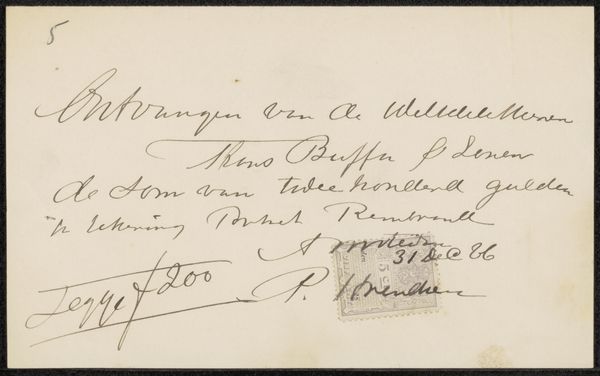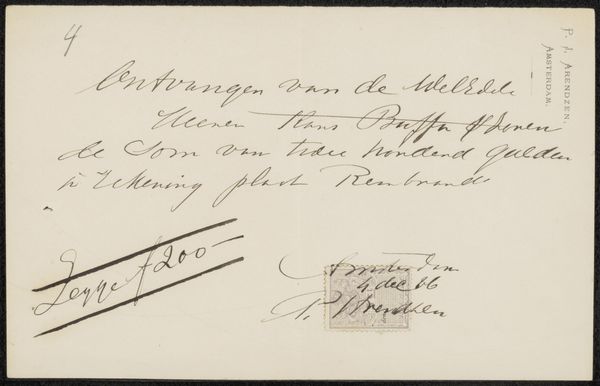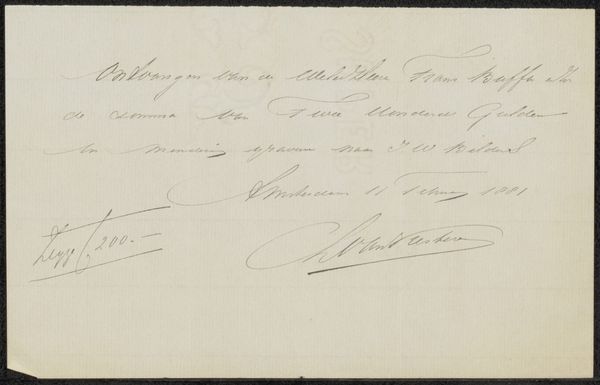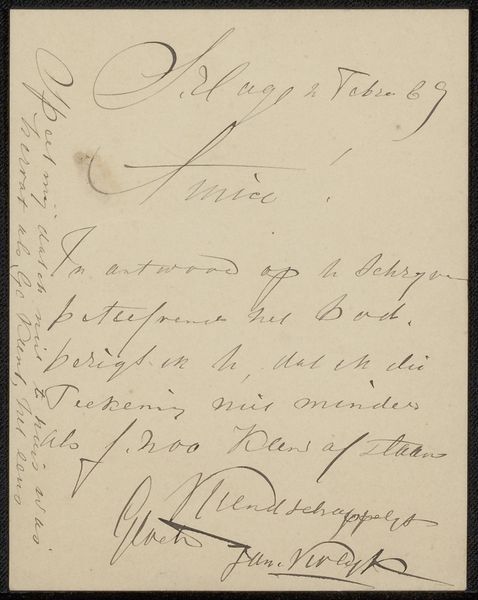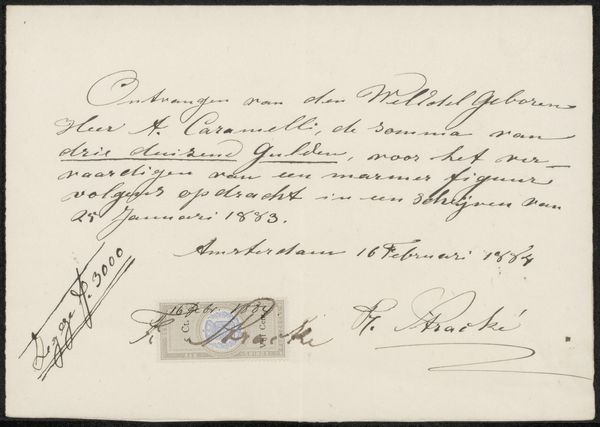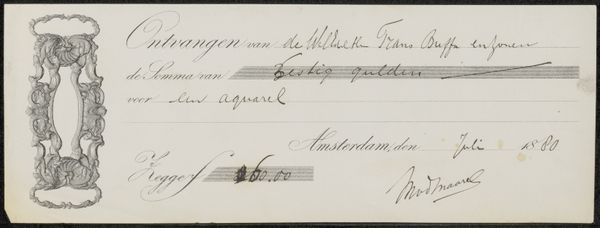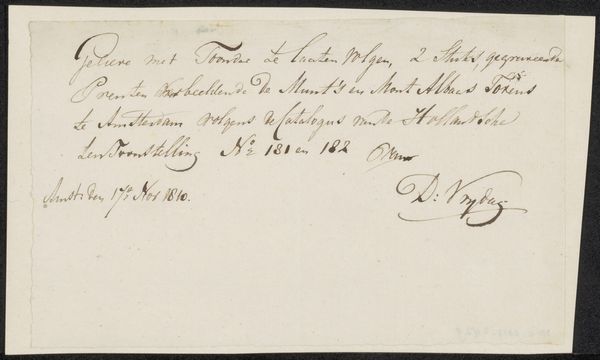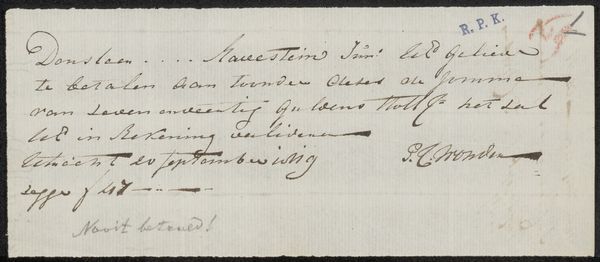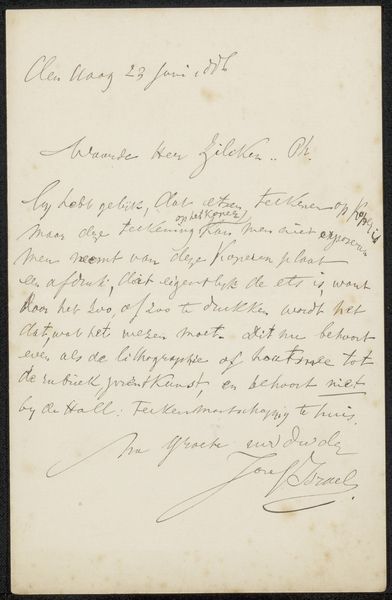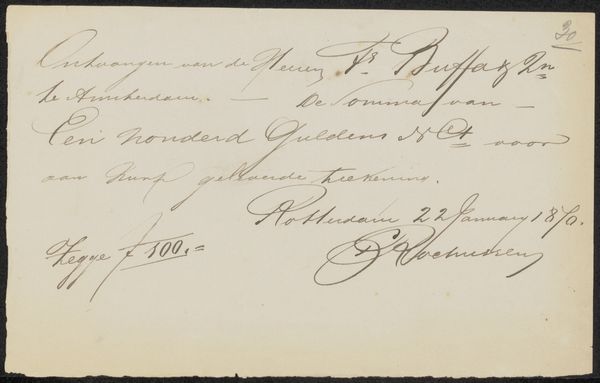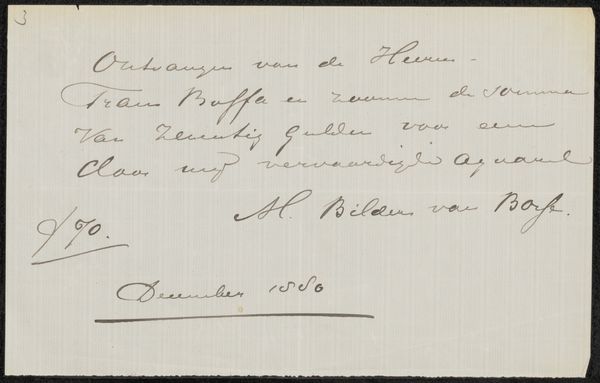
Ontvangstbewijs aan Petrus Johannes Arendzen Possibly 1886 - 1889
0:00
0:00
fransbuffaenzonen
Rijksmuseum
drawing, paper, ink
#
drawing
#
paper
#
ink
#
miniature
#
calligraphy
Copyright: Rijks Museum: Open Domain
Curator: Alright, let's discuss this interesting piece from the Rijksmuseum collection. This is a receipt given to Petrus Johannes Arendzen, made sometime between 1886 and 1889, by the firm Frans Buffa en Zonen. It's rendered in ink on paper, a miniature example of formal calligraphy. Editor: It has this undeniable old-world charm, you know? Just the sight of that spidery ink script gives it such an air of elegant history. The careful loops and flourishes—it feels like a secret message somehow! Curator: It is rather exquisite. Consider the social function of documents like these in 19th-century commerce. A formal record, meticulously rendered, speaks to the reputation and trust placed in establishments like Frans Buffa en Zonen. The “ontvangstbewijs,” as we call receipts now, provided a paper trail— quite literally in this case!—of accountability and business dealing. Editor: And, as with any good trace of history, there is also an undeniably cool materiality to it! The way the ink probably slightly bleeds into the fiber of the old paper… It's almost like witnessing a tangible transaction taking place through time. Look, for example, how "Amsterdam" and "23 Sept 1886" are marked with a postage stamp just below the signature; these details alone suggest stories. Curator: Precisely. These documents offer fascinating glimpses into artistic networks of the era as Frans Buffa en Zonen were art dealers, and based on the Dutch text, Petrus Johannes Arendzen received 300 guilders as an "advance payment" on "the painting of Rembrandt," likely referring to one of Rembrandt's artworks for which the payment was done through this gallery. We're given tangible insights into the art market and their financial dealings with clients. Editor: It's like we’re peeling back the layers of time to look at it... Who knew a receipt could feel this intimate? And by virtue of having an account of monetary details that also directly references an artwork, like this one seemingly being about a Rembrandt, gives it the feeling of being both pragmatic and artful at the same time. Curator: Agreed. It is both commonplace and a significant cultural artifact. It demonstrates, in material form, the financial and institutional support structure underpinning artistic creation in that period, the commercial backdrop against which artists like Rembrandt became iconic. Editor: That is lovely. Who knew such profound considerations could spring forth from such a modest miniature! It really does feel like holding a secret piece of time in our hands!
Comments
No comments
Be the first to comment and join the conversation on the ultimate creative platform.
